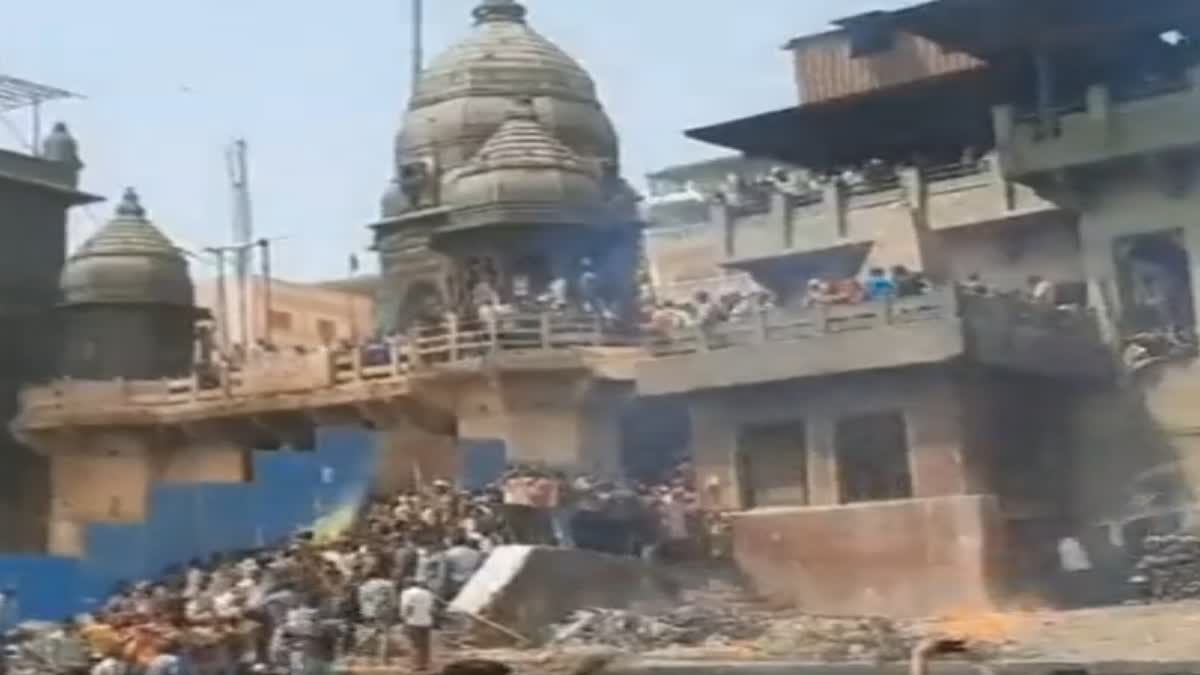Varanasi: The Holi festival in the spiritual capital of India is unique for its world-famous grandeur, ancient traditions, and mystical features. It’s believed that during Rangbhari Ekadashi, Lord Shiva plays Holi with devotees, followed by celebrations in the cremation grounds with ghosts and eunuchs. This religious camaraderie is popularly known as Masan Holi.
This year Masan Holi will be celebrated on March 11 and bring more diversity as it will include Naga sadhus celebrating the Bhasm Utsav (festival of ashes) with their idol. The Naga monks will also take out a procession after the sacred Amrit Snan at the Maha Kumbh Mela.
Unique and Ancient Tradition
Varanasi—the world’s oldest living city—presents an unparalleled devotion to Lord Shiva, and during Holi, people not only get immersed in colours but also in pyre ashes as well. Every year, this unique Holi is observed at the Manikarnika Ghat, which witnesses sadhus and Aghoris showing reverence to Lord Shiva, the deity of destruction and regeneration, by playing Holi with ashes.
A local priest says this time Masan Holi would be a special display of grand confluence as Naga sadhus from across the country and the world will join in with Mahadev as it happens soon after Maha Kumbh.
‘Such Holi Not Played Anywhere Else’
Several religious leaders, including Naga saint Raghunandan Giri, expressed happiness and excitement over the Masan Holi celebrations.
Giri says he, along with other sadhus, will stay in Banaras until Holi and afterwards proceed to Kedarnath. “Masan Holi is a big blessing from Baba Vishwanath, and we will keep this tradition,” he says, adding that the ritual was exclusive to Varanasi, distinguishing it from cities like Haridwar, Nashik, or Ujjain.
‘Kumbh Bath is Complete Only in Kashi’
Another Naga saint says that the Maha Kumbh bath is incomplete without a pilgrimage to Kashi (Varanasi).
“Bathing in the Ganges in Kashi is essential for fulfilling the pilgrimage. After Holi, we will take out a procession, gather at the akhara, and then travel to Kedarnath, where the temple remains closed for six months,” he explained.
Meanwhile, preparations for Masan Holi are in full swing. The rituals will start on February 24 from an abode of the former Mahant of the Shri Kashi Vishwanath Temple. On February 26, Lord Shiva and Goddess Parvati’s wedding ceremony will take place, followed by Mangal Shagun on March 8 and the Gauna ceremony on March 9. On March 10, a grand palki yatra (palanquin procession) will proceed to the Shri Kashi Vishwanath Temple. Rangbhari Ekadashi will also be observed on March 10, followed by Masan Holi on March 11 at Manikarnika Ghat.
Another famous tradition associated with the festival is the turmeric and oil ritual, in which turmeric is applied to a silver idol of Lord Shiva.
‘There is No Greater Heaven Than Kashi’
Naga saint Raghunandan Giri described Kashi as a divine abode and a heaven. “There is no greater paradise on earth. Whoever dies here attains salvation. It is believed that Lord Shiva holds Kashi on his trident,” he said.
Balak Giri Naga Baba, a Nepalese saint, says, “Like every year, I have come to Banaras from Prayagraj after Maha Kumbh. This year, too, I will celebrate Shivratri and Holi with Lord Vishwanath. Every year, we play Holi with Bholenath.”
Read More



